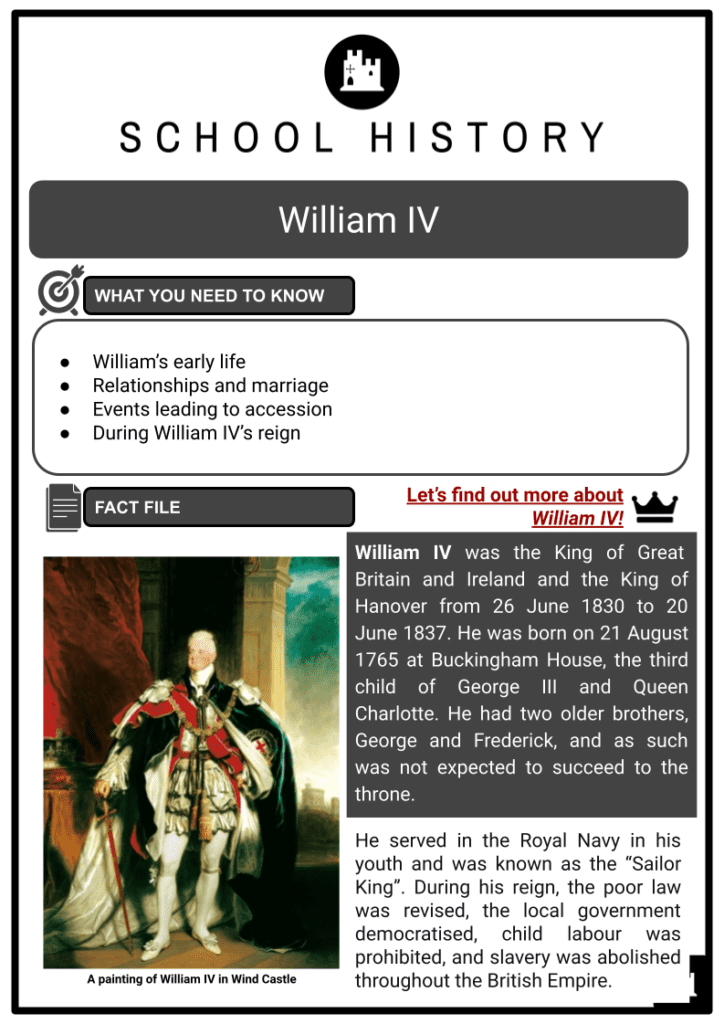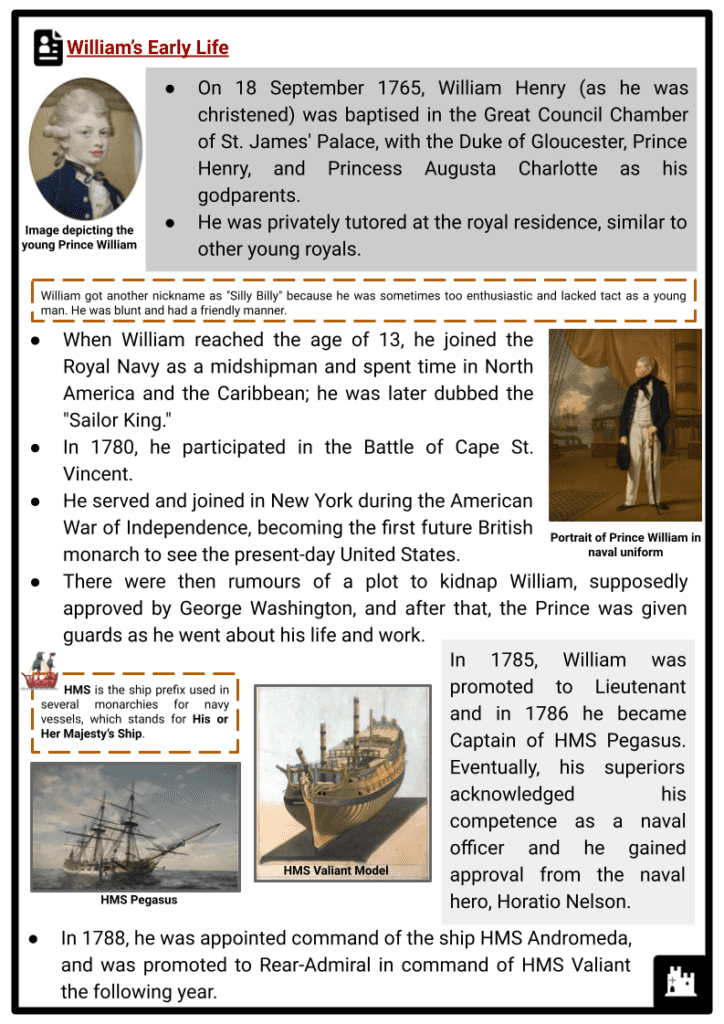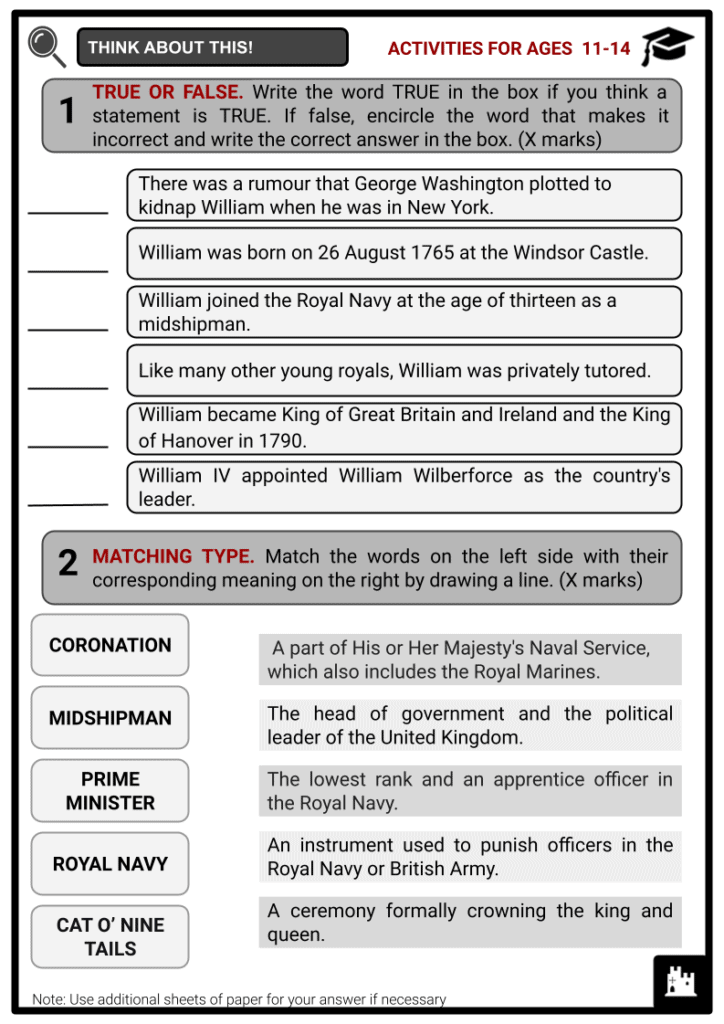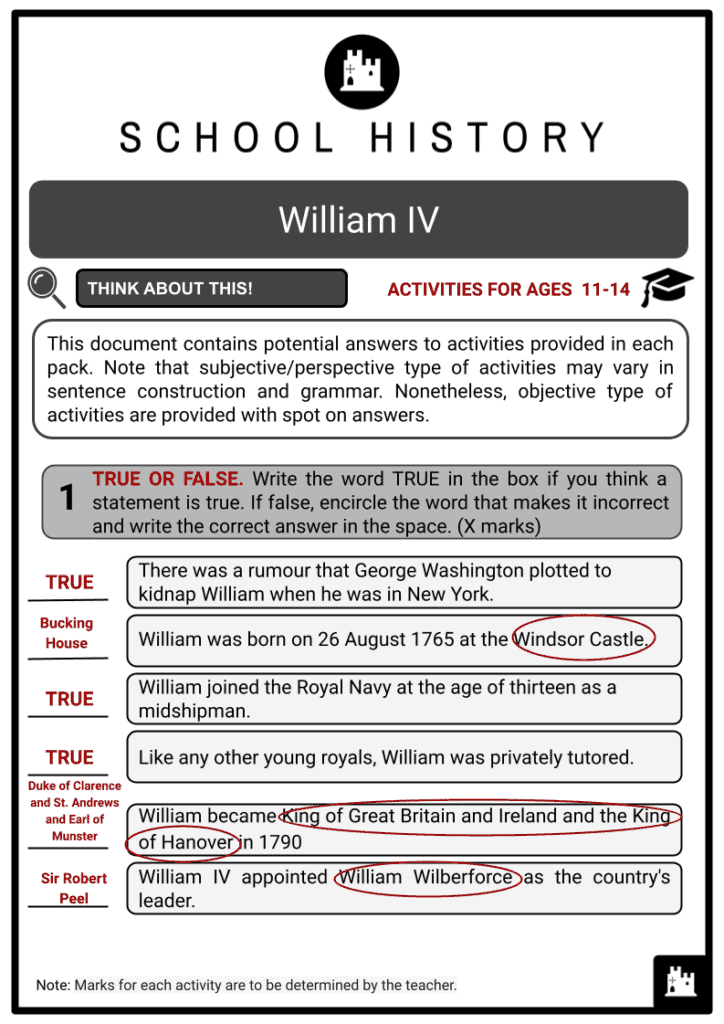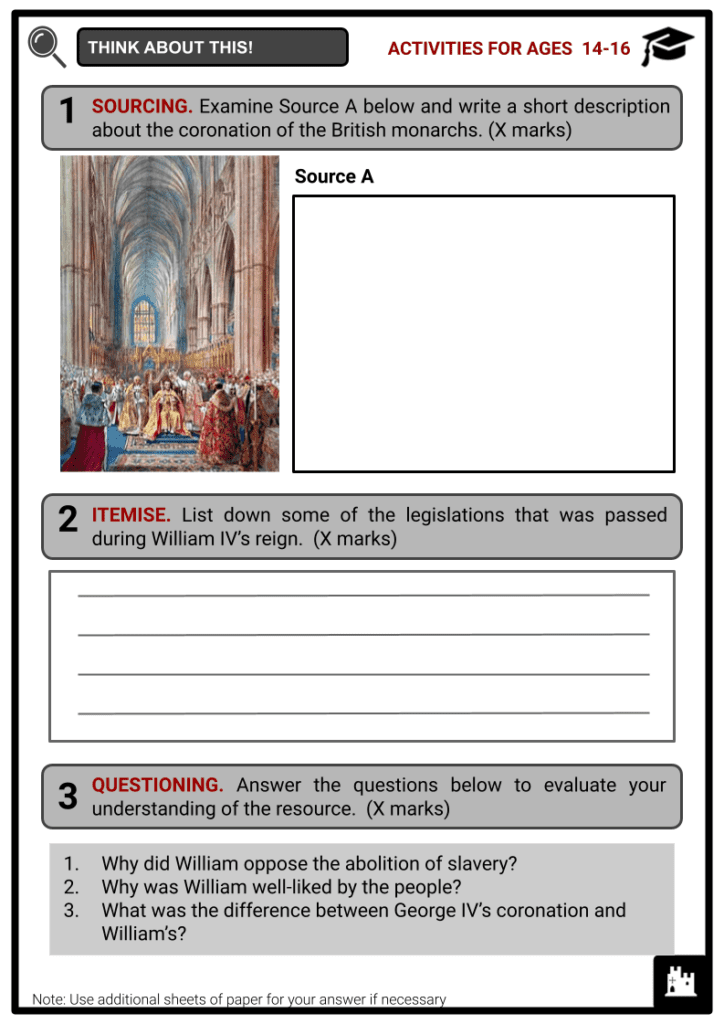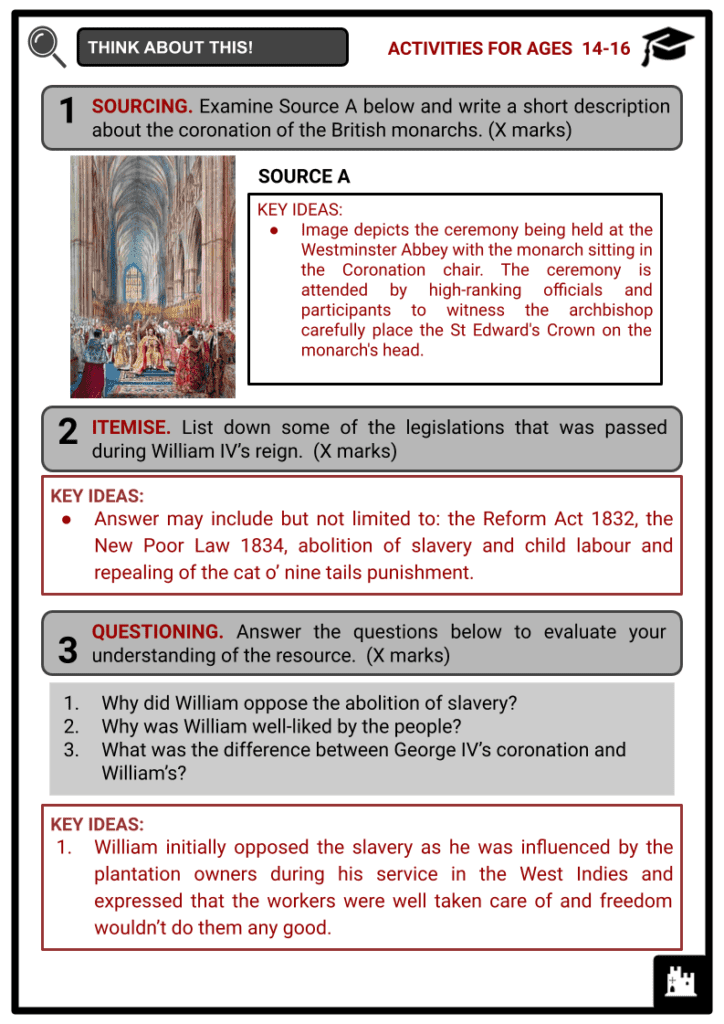William IV Worksheets
Do you want to save dozens of hours in time? Get your evenings and weekends back? Be able to teach about William IV to your students?
Our worksheet bundle includes a fact file and printable worksheets and student activities. Perfect for both the classroom and homeschooling!
Summary
- William’s early life
- Relationships and marriage
- Events leading to accession
- During William IV’s reign
Key Facts And Information
Let’s find out more about William IV!
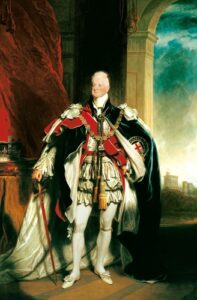
William IV was the King of Great Britain and Ireland and the King of Hanover from 26 June 1830 to 20 June 1837. He was born on 21 August 1765 at Buckingham House, the third child of George III and Queen Charlotte. He had two older brothers, George and Frederick, and as such was not expected to succeed to the throne. He served in the Royal Navy in his youth and was known as the “Sailor King”. During his reign, the poor law was revised, the local government democratised, child labour was prohibited, and slavery was abolished throughout the British Empire.
William’s Early Life
- On 18 September 1765, William Henry (as he was christened) was baptised in the Great Council Chamber of St. James' Palace, with the Duke of Gloucester, Prince Henry, and Princess Augusta Charlotte as his godparents.
- He was privately tutored at the royal residence, similar to other young royals. William got another nickname as "Silly Billy" because he was sometimes too enthusiastic and lacked tact as a young man. He was blunt and had a friendly manner.
- When William reached the age of 13, he joined the Royal Navy as a midshipman and spent time in North America and the Caribbean; he was later dubbed the "Sailor King."
- In 1780, he participated in the Battle of Cape St. Vincent.
- He served and joined in New York during the American War of Independence, becoming the first future British monarch to see the present-day United States.
- There were then rumours of a plot to kidnap William, supposedly approved by George Washington, and after that, the Prince was given guards as he went about his life and work.
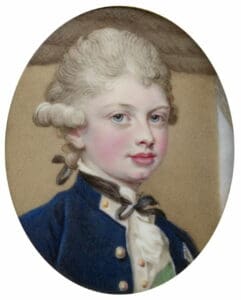
Image depicting the young Prince William - In 1785, William was promoted to Lieutenant and in 1786 he became Captain of HMS Pegasus. Eventually, his superiors acknowledged his competence as a naval officer and he gained approval from the naval hero, Horatio Nelson. HMS is the ship prefix used in several monarchies for navy vessels, which stands for His or Her Majesty’s Ship.
- In 1788, he was appointed command of the ship HMS Andromeda, and was promoted to Rear-Admiral in command of HMS Valiant the following year.
- In 1790, William ceased his activity in the Royal Navy and became Duke of Clarence and St. Andrews and Earl of Munster.
- He made several passionate contributions to the debate on the war with France, which was declared in 1793.
- In 1798, he was promoted to Admiral and later, in 1811, Admiral of the Fleet. However, his positions were more honorary as he was not given any commands and did not serve during the Napoleonic Wars.
- Having no active place to serve in the Navy, he shifted his attention to politics and openly expressed his opposition to the abolition of slavery. He reasoned that freedom would not do any good to the enslaved people. Since he served in the West Indies, his opinions reflected those of the plantation owners he had met during his time there.
- In his inauguration speech to the Parliament, he referred to himself as "an attentive observer of the condition of the negroes" who found them to be well-cared for and "in a state of modest happiness."
- His ideas brought him into disagreement with others who had been actively advocating for the abolition of slavery, none more so than the abolitionist William Wilberforce, whom he labelled a "fanatic or hypocrite."
- On some matters, he was more liberal, such as when he supported efforts to abolish laws that punished Christians who dissented. He also opposed initiatives to prohibit remarriage for persons convicted of adultery.
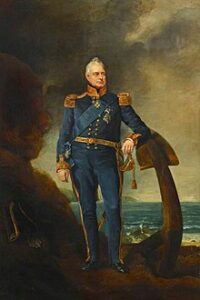
Image depicting William IV in Admiral of the Fleet’s Full Dress Uniform
Relationships and Marriage
- William was part of the generation to reach adulthood under the Royal Marriages Act of 1772. The law stated that descendants of George II couldn't get married without the monarch's permission or, if they were over the age of 25, without giving the Privy Council 12 months' notice. King George II enacted the Royal Marriages Act of 1772 to prevent his relatives from marrying against his will. A law passed on 01 April 1772 that a royal cannot marry without the monarch's counsel and approval.
- Several of George III's sons, including William, chose to live with the women they loved rather than seeking to wed.
- After William left the Royal Navy in 1791, the Duke of Clarence resided with his mistress, Dorothea Bland, an actress better known by her stage as Mrs Jordan. The two had ten illegitimate children, five girls and five sons, who took the surname Fitzclarence.
- William scouted for a potential wife; however, each woman was either disapproved by his eldest brother, the Prince of Wales, or they turned him down.
- On 11 July 1818, William married German Princess Adelaide of Saxe-Meiningen at Kew Palace. The new Duchess of Clarence was almost thirty years younger than her husband, but they made a good pairing.
- She was willing to accept and even welcomed William's nine surviving children, some of whom were still young.
- William and the Duchess had two daughters, both of whom died in infancy.
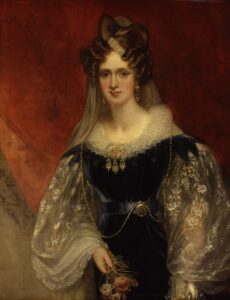
Image depicting Princess Adelaide of Saxe-Meiningen - The marriage was happy, and they lived together for twenty years until William's death.
Events Leading to Accession
- With two older brothers, George and Frederick (Duke of York), William had never expected to be crowned.
- William's elder brother, the Prince of Wales, succeeded the throne and became George IV when King George III died in January 1820.
- However, William became heir presumptive at the age of 61, when his second brother, Frederick died in January 1827.
- The incoming Prime Minister, George Canning assigned him Lord High Admiral later that year.
- Despite the obstacles he encountered, William performed admirably as Lord High Admiral.
- He repealed the cat o' nine tails for all crimes except mutiny, sought to enhance the standard of naval gunnery, and demanded frequent reports on the state and preparedness of each ship. The cat o' nine tails is a form of multi-tailed whip or flail that originated as an instrument for extreme physical punishment, particularly in the Royal Navy and British Army.
- In early 1830, George IV's health worsened and passed away on 26 June 1830 without legitimate issue, William succeeded him as King William IV at the age of 64.
- On 8 September 1831, William IV was crowned at Westminster Abbey. The coronation procession departed St. James's Palace at 10:15 a.m., with the King wearing an admiral's uniform and the Queen wearing a white and gold dress. The royal celebration and ceremony concluded at 3 p.m. The traditional coronation banquet was not held because the King deemed it too expensive.
During William IV’s Reign
- In contrast to the previous King George IV, who tended to spend most of his time in Windsor Castle, William IV was known to walk unaccompanied through London or Brighton, especially early in his reign.
- King William IV immediately demonstrated his diligence in his work. People viewed him as more approachable and down-to-earth than his brother; consequently, he was extremely well-liked.
- William did not forget his nine surviving illegitimate children when he ascended the throne; he created his eldest son Earl of Munster and granted the other children the precedence of a daughter or younger son of a marquess.
- Perhaps the most well-known legislation during his reign was the Reform Act of 1832, which widened the voting rights to the middle classes while maintaining property restrictions.
- Lord Charles Grey made the decision to implement this reform after Arthur Wellesley, the Duke of Wellington and his Tory government was defeated in the 1830 general election.
- The Reform Act's introduction precipitated a crisis that sparked criticism, opposition, and controversy. In practical terms, extended suffrage remained a difficult decision. Others believed that universal male suffrage without property restrictions would disrupt the status quo, whereas some parties advocated for it.
- Ultimately, it was determined to expand the franchise while maintaining a property qualification.
- The bill was a significant step toward a constitutional monarchy and reflected the changing times.
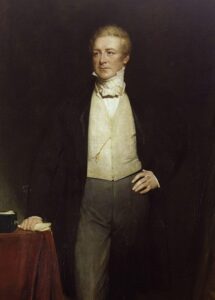
Image depicting Prime Minister Robert Peel - Before the Reform Act of 1832, the middle and working class did not have the right to vote. The Act's passing extended suffrage to the middle class, including small landowners, tenant farmers, shopkeepers, and those who paid a rent of over £10. However, the Act failed to extend it to the working class people.
- The result led to the first national movement of the working class people called Chartism.
- In 1834, the Poor Law Act was amended to aid in providing the poor through a system that would lead to the construction of workhouses throughout the nation. It was passed by a large majority and was viewed at the time as a solution to the shortcomings of the previous system.
- William's involvement in politics for the remainder of his reign extended to his choice of Prime Minister when he grew increasingly dissatisfied with Lord Melbourne and his Whig government.
- William instead chose to appoint Tory Sir Robert Peel as the country's leader. This would be the last time a monarch appointed a Prime Minister against parliament's will.
- Whigs and the Tories are two major and opposing political parties or factions in England, especially during the 18th century. Tory Peelites are also known as the Conservative Party.
- William was also opposed to his ministers' policy of supporting liberals in Portugal, Spain, and other European countries as he firmly believed that Britain should not interfere in the domestic affairs of other countries.
Death
- Despite being relatively brief, William IV's reign was highly eventful. As he approached the conclusion of his life, his health declined, and the end of his reign became imminent.
- William IV died of heart failure at age 71 on 20 June 1837, with his wife Adelaide by his side. His legacy was marked by reform, enhanced stability, and a plan for constitutional monarchy. He was buried at Windsor Castle.
- In the United Kingdom, he was succeeded by his niece, Victoria. In Hanover, where the Salic law of succession forbade women from the throne, his brother, Ernest Augustus, ascended the throne.

